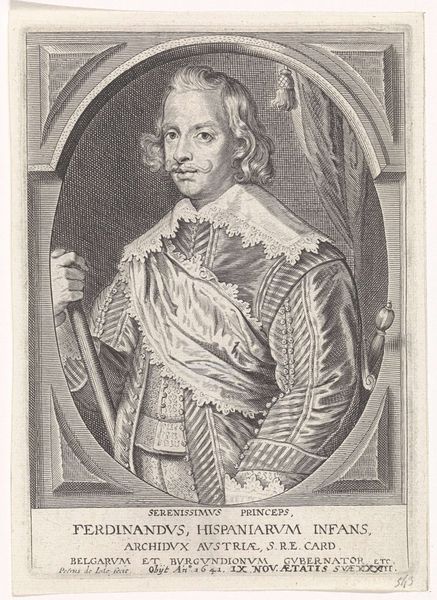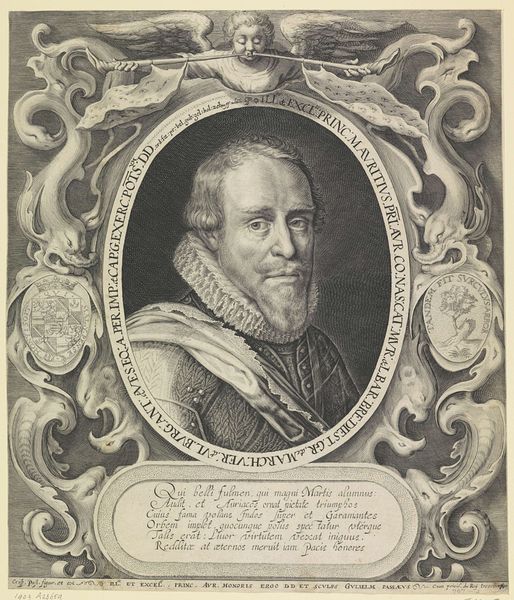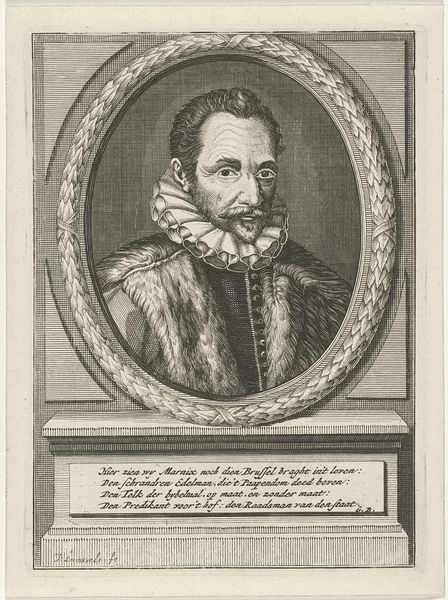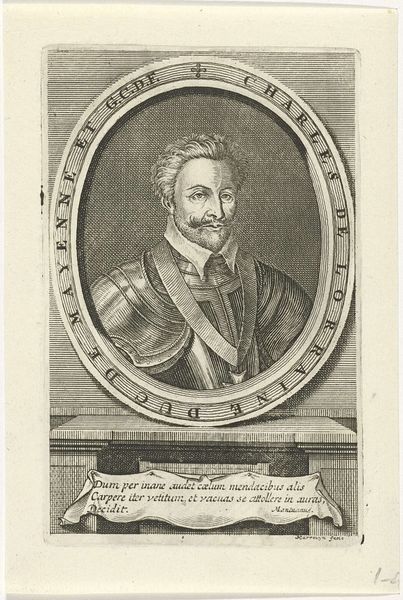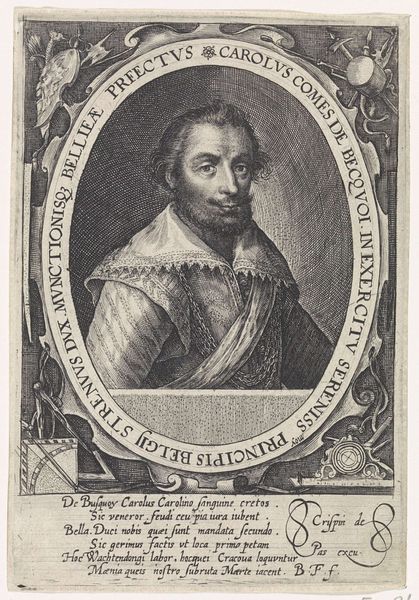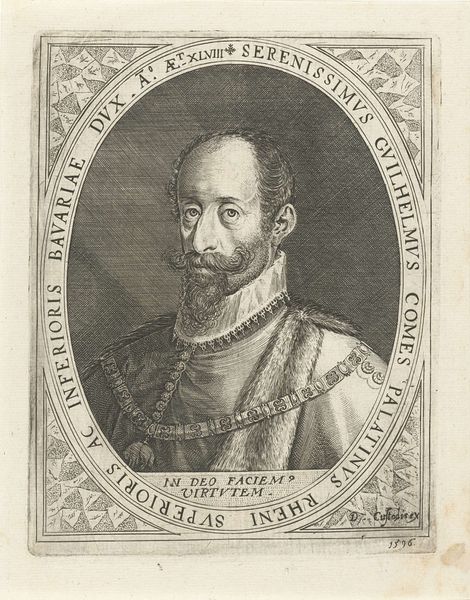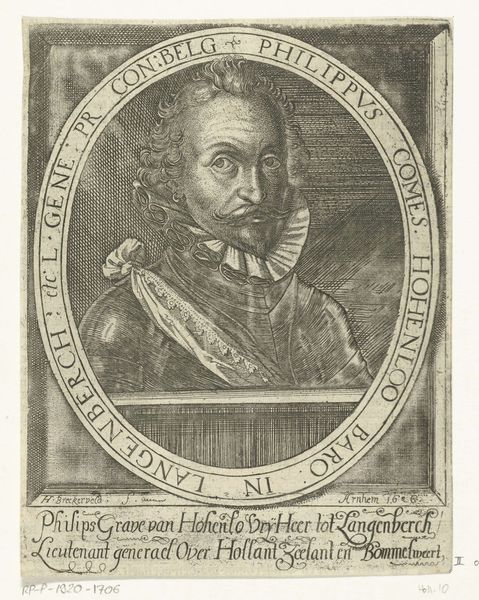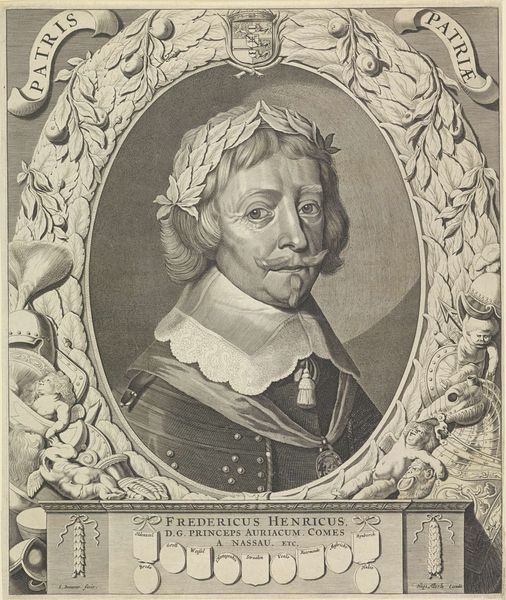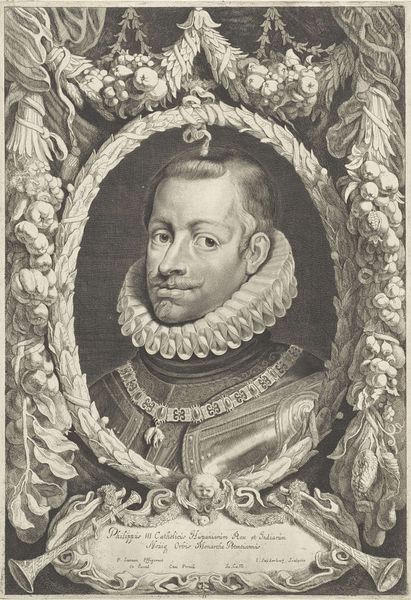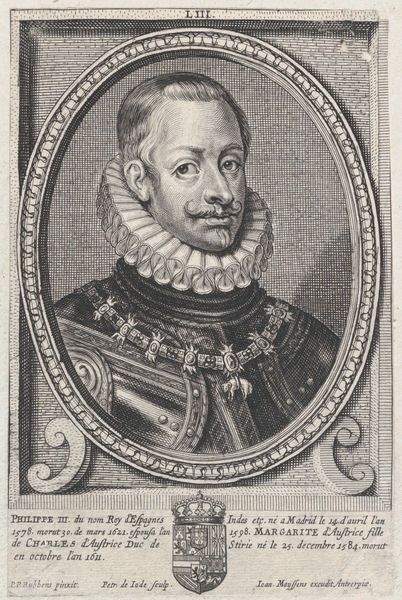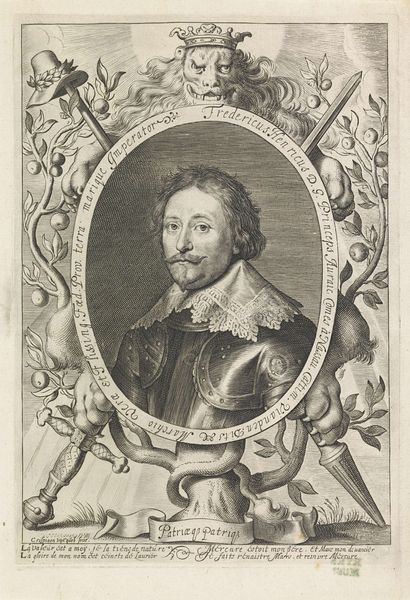
print, etching, engraving
#
portrait
#
aged paper
#
baroque
# print
#
etching
#
old engraving style
#
engraving
Dimensions: height 171 mm, width 124 mm
Copyright: Rijks Museum: Open Domain
Curator: Looking at this print, the density of line work creates an almost overwhelming intensity, doesn't it? There’s so much detail packed into this small space. Editor: Absolutely, the fine lines almost vibrate! There's a stiffness, too—a formal quality that speaks volumes about power, yet also hints at the fragility of those who hold it. What are we looking at here? Curator: We're examining "Portret van Gustaaf II Adolf," an etching and engraving by Crispijn van de Passe (II), created sometime after 1632. It’s part of the Rijksmuseum's collection. It depicts King Gustav II Adolf of Sweden. Editor: Okay, seeing "King" explains the heavy symbolism – even the aged paper lends an aura of importance. Who was this Gustav? Curator: Gustav II Adolf reigned during Sweden’s rise to great power status in the 17th century. A significant figure in the Thirty Years’ War. The print serves as propaganda, cementing his image. Note the laurel wreath and winged figures proclaiming his glory, literally framing him as divinely sanctioned. Editor: Propaganda it is, then. And that ornate collar and carefully groomed beard... Everything is so meticulously rendered, bordering on idealized, not necessarily *real*. What do the phrases inscribed around the portrait mean? Curator: They are in Latin. Phrases intended to further emphasize his noble virtues. There's mention of him being comparable to great heroes. A deliberate construction of an image to bolster his reputation and legacy. We must remember this piece exists within a highly structured, politically charged artistic environment. Editor: I see that... There's a sense of being sealed in the amber of his achievements. I feel like those winged figures holding the trumpets are also stifling him within the same framework of heroism that he sought. Do you think such prints shaped public opinion back then? Curator: Undoubtedly! Images held tremendous power. It circulated widely and solidified the King's position as a strong, divinely favored leader in a period of great turmoil and conflict across Europe. These weren't neutral depictions. They were vital tools for constructing and controlling narratives. Editor: Absolutely. It leaves me pondering how power utilizes aesthetics and what that really means within a cultural context that sought after social validation and even control. Thank you! Curator: An intriguing discussion. Thank you. The dialogue reminds us that studying visual history can show the values and structure of societies far removed from our own.
Comments
No comments
Be the first to comment and join the conversation on the ultimate creative platform.

